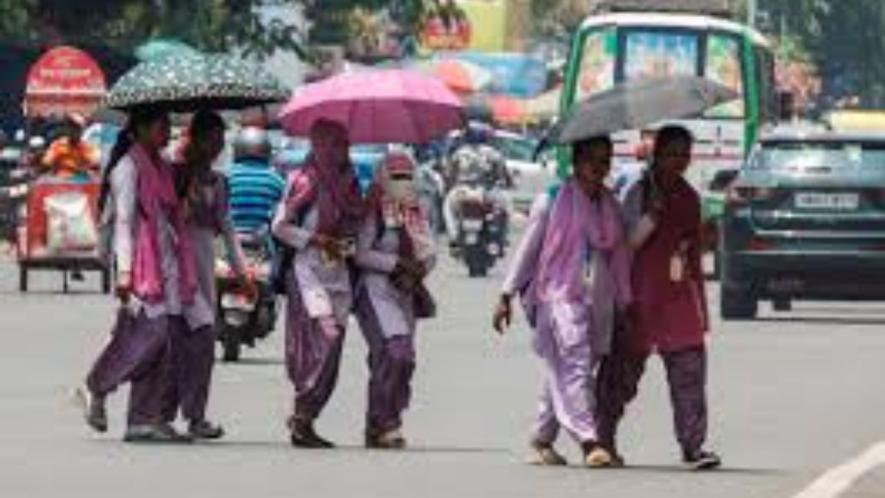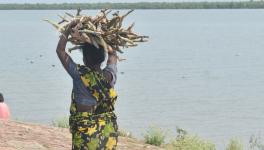Odisha: Bhubaneswar, a Festering Sore as Heatwave, Humidity Soar Across State

With the mercury soaring up to 46.2°C. and an extreme heat wave coupled with humidity prevailing across the state, the state government has announced an unscheduled closure of all schools and educational institutions until further notice.
The fast-disappearing forest cover, now down to 52,470 sq km out of the total geographical area of 155,707 km, and the rapid rise in greenhouse gasses, has exacerbated the frequency and intensity of heat waves.
One of the major hot spots is the state capital, Bhubaneswar, which recorded above 40.2°C temperature, marking its first encounter with the 40-degree mark this year. What is noteworthy is that Bhubaneswar takes a leading position in greenhouse gas emissions that aggravates the plight of common people on the streets.
It is not just the heat, what is more killing is the high humidity that has touched almost 75% to 80%, reducing human tolerance level during the day time.
Also, it is not only humans, the impact of climate change is adversely affecting other living beings, as they have no alternative shelter during the solstices in the face of the fast depletion of trees, in particular.
Since the past one year, one can notice the virtual disappearance of birds and insects from nature's cycle.
Vultures, as such, are already extinct, but sightings of many other birds have become rare.
The perennially seen crows are no longer visible in places like Bhubaneswar.
Sparrows have become a creature of the past, ridding us all from those nostalgic chirps. Looking for them in concrete monstrosities in cities and towns has become dystopian.
No mynahs can be found frolicking and hopping around. Their disappearance is heart-breaking.

Where Have Ants Gone?
There was a time when even a crumb of a sweet invited thousands of ants. Today, even a full sweet lying bare on the ground or anywhere, does not attract a single ant.
“It affects at least 10,967 species on the IUCN (International Union for Conservation of Nature) Red List, and projections suggest that if global temperatures increase by 2°C by 2100, about 18% of all species on land will face extinction,” Biswajit Mohanty, an environmental activist, told this writer.
The rising sea temperatures, melting ice, and changing weather patterns caused by climate change are set to wreak further havoc.
Are we heading toward an existence where, in the days to come, life will be deprived of a minimum sustainable eco-diversity essential in a corresponding life-sequence? Even bigger species, such as elephants, big cats, jackals and many others are on the run as their world (forest cover) is shrinking fast.
The state capital stands out for many such dystrophic reasons and the authorities have an obligation to redress such damage right in front of their eyes. “It is a mad race for unplanned township expansion in the capital city, in which the builder-government unholy nexus is visible anywhere and everywhere”, adds Mohanty.
“It is unbelievable that there were 16 natural (nullahs) water bodies once garlanding the city but, as on date, almost all of these have been given an inglorious burial in Bhubaneswar, replaced by apartments, both commercial and residential, standing like behemoths”, rued Mohanty.
This leaves the natural phenomenon of the creation of underground water tables impossible, as the rain water simply flows through concrete surfaces to join the twin rivers, Daya and Bhargavi in the South end and river Kuakhai in the North.
“Creation of some gardens or ‘batikas’ in the middle of barren regions can never compensate for the past. Let’s take a glance at the plight of trees” goes on Mohanty, “ In Bhubaneswar, governments have felled a considerable number of shadow yielding trees, some of them a century or half century old, for various projects including road expansion and construction, with a significant number for road expansion”.
For instance, a little over 7,800 trees were felled between 2019-20 and 2022-23. But the government claims to have compensated by afforestation, but far from the location of desertification. Also, the number of trees afforested is so abysmally low in comparison to the felled ones.
Another data shows that 18.5 million trees were felled for road widening in Odisha in a decade, with a significant number of these being in Bhubaneswar.
The highest recorded temperature in Bhubaneswar in the past 20 years (up to April 24, 2025) was 45.9°C, recorded on June 5, 2012. This was the highest temperature in the city in the past seven years.
Newspapers reported that the extreme heat was attributed to a sudden shift in wind patterns.
It is April now, and what is being feared is what is in store when the June or July solstice starts.
The writer is a freelancer based in Bhubaneswar, Odisha.
Get the latest reports & analysis with people's perspective on Protests, movements & deep analytical videos, discussions of the current affairs in your Telegram app. Subscribe to NewsClick's Telegram channel & get Real-Time updates on stories, as they get published on our website.
























